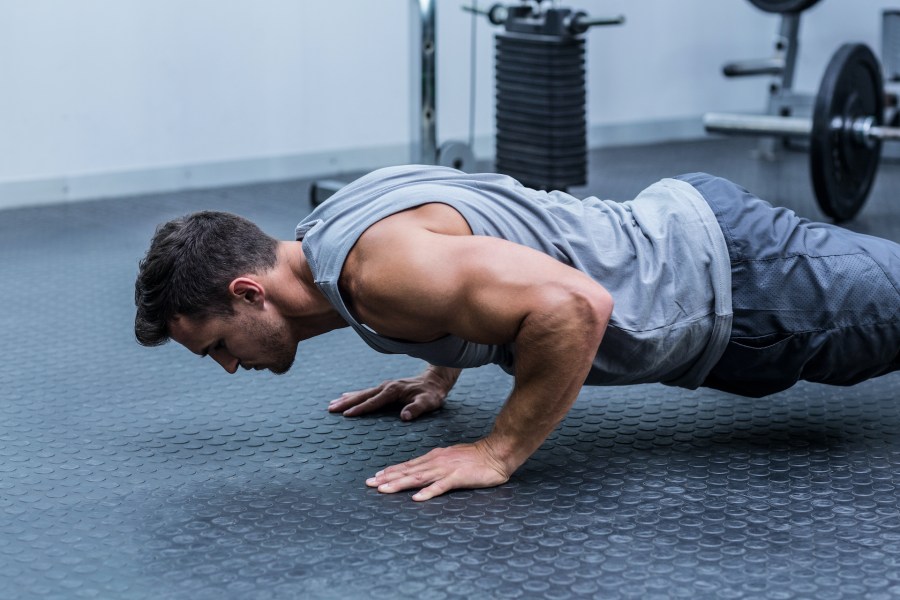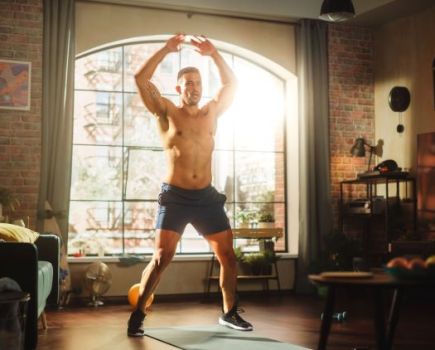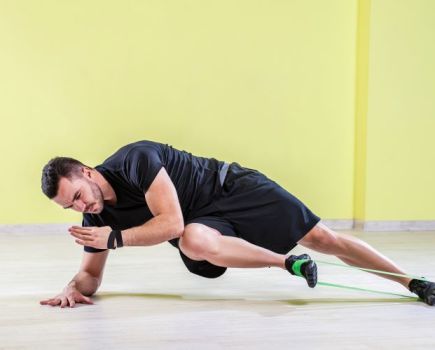Benching your bodyweight or super-sizing your squat is all well and good, but to get a true idea of your strength and fitness, bodyweight moves provide the clearest answers.
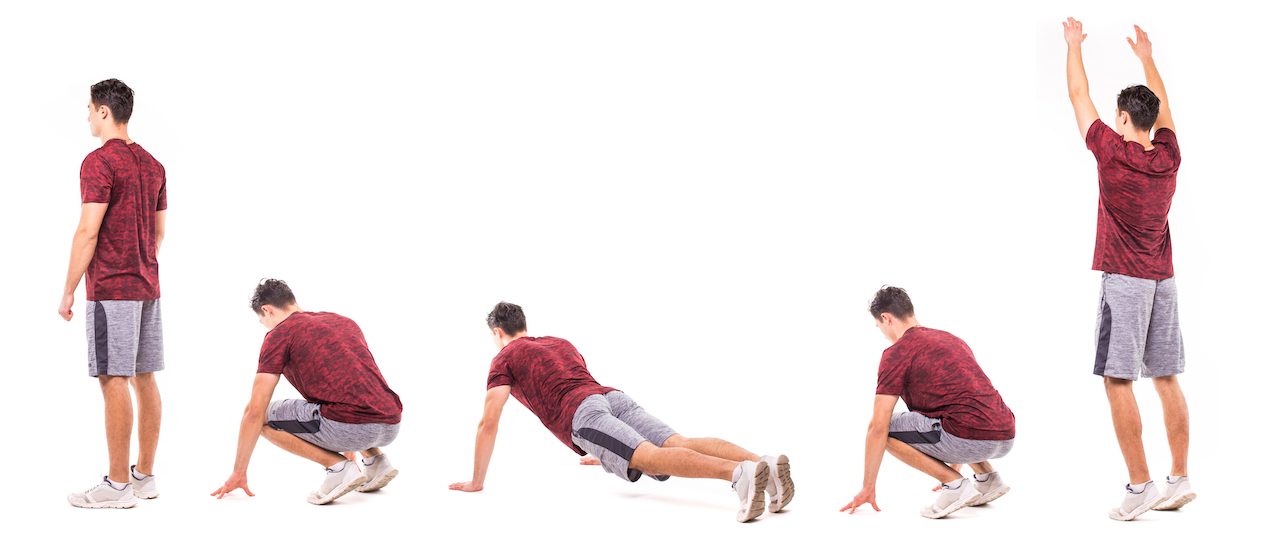
The burpee is the king of full-body, fat-burning exercises
You don’t need to lift weights to get in shape; some of the toughest and most effective exercises around require nothing more than a patch of floor and the ability to control your own weight.
Not only do bodyweight moves tend to work a variety of muscle groups, they’re also a sure-fire way to create a solid core, improved range of motion and a revved-up metabolism.
So whether you don’t have the time to get to the gym, or you are just looking for a bit of variation to your training, these five exercises are all you need for a full-body workout.
Burpee
The king of lung-busting, eye-popping exercises, master the burpee and you’ll be on the way to a serious level of fitness. To really test yourself, set your stopwatch and see how quickly you can do 100 – sub-ten minutes is good going.
- Standing with your feet in a shoulder-width position, squat down and place your hands on the floor.
- Kick your legs back so you’re at the top of a press-up – keep your back flat and don’t let your hips sag.
- At this point, you can either complete a press-up then jump back up (the harder option, obviously), or simply jump your feet forward, before jumping in the air.
- As you jump, raise your arms above your head, then repeat.
Press-Up
The press-up can sculpt your chest and triceps like no other move. Make it easier by elevating your hands on a block, or harder by raising your feet on a bench.
- Start with only your hands and feet in contact with the floor – hands shoulder-width apart.
- Create a straight line from your shoulders down to your feet, keeping your head up and chest out.
- Lower your body down to just above the floor by bending at your elbows, keeping them as close to your side as possible, rather than flaring out.
- Pause momentarily then drive back up to the start position.
- Make sure that your elbows stay close to your body and don’t let your hips sag down.
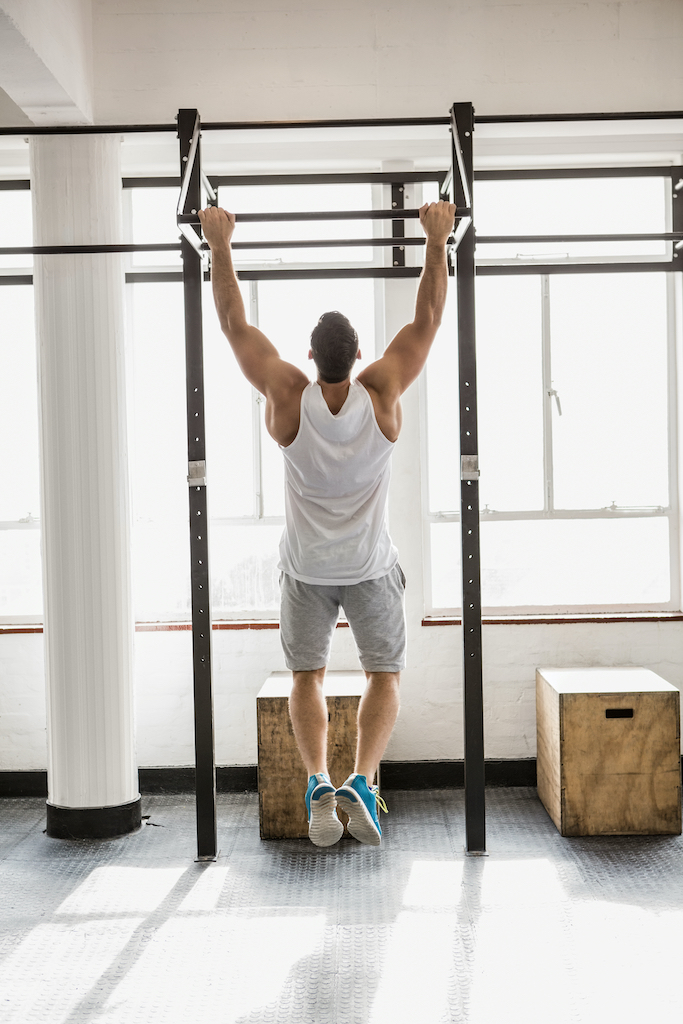
If you can do 3 sets of 10 strict-form pull-ups, you know you’re in decent shape
Pull-Up
Just as the burpee is a true test of fitness, the pull-up is a strength-training staple. If you’re able to do 3 sets of 10 reps with good form, you know you’re in good nick.
- Grab a pull-up bar with an overhand (palms facing away) shoulder-width grip.
- Hang from the bar by bringing your feet off of the floor.
- Pull yourself up to touch your chest to the bar, keeping your chest pushed out and shoulders retracted.
- Focus on using your lats, rather than your arms.
- Lower yourself down under control until your arms are straight.
Handstand Press-Up
There aren’t many bodyweight moves that specifically target the shoulders. This is one of them.
Make it even harder by raising the position of your hands, to allow your head to come down lower to touch the floor.
- Place your hands roughly six inches away from a wall and slightly wider than shoulder-width apart.
- Kick yourself off of the floor into a handstand position, resting your feet against the wall.
- Slowly lower your head down to the floor by bending at your elbows.
- Pause and then drive back up to a handstand position.
Pistol Squat
For seasoned gymgoers, the bodyweight squat isn’t challenging enough to see much benefit – unless you do hundreds of reps. The pistol squat, on the other hand, is a seriously tough move that will test your stability and unilateral leg strength like few other exercises.
- Stand on one foot with your toes pointing forward.
- Lower yourself down, keeping your weight evenly distributed through your foot, and extend the non-standing leg out in front of you.
- Come down to at least parallel (lower if possible) and then push back up to a standing position.
- To begin with, lightly hold a door frame or pole to help you keep your balance.
- Allow a slight lean forward of your torso during the squat, ensuring your back stays straight.

